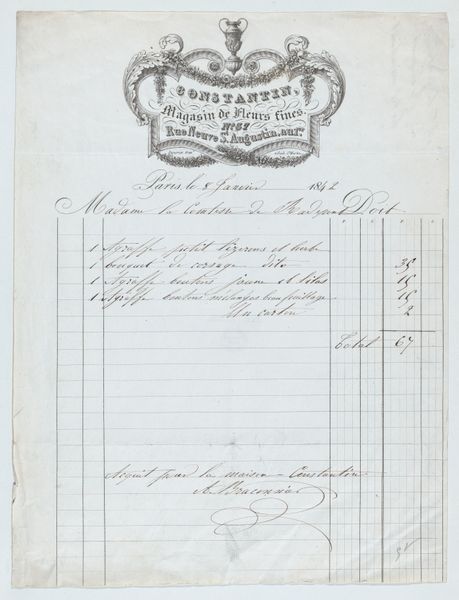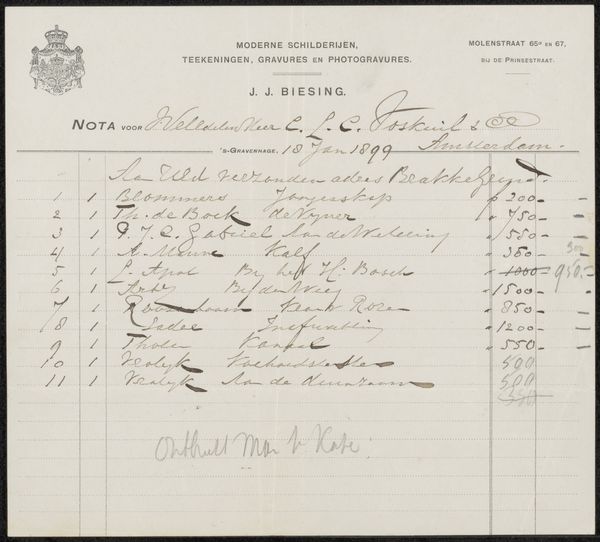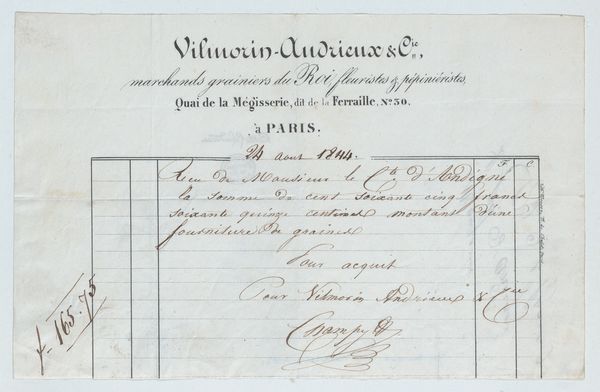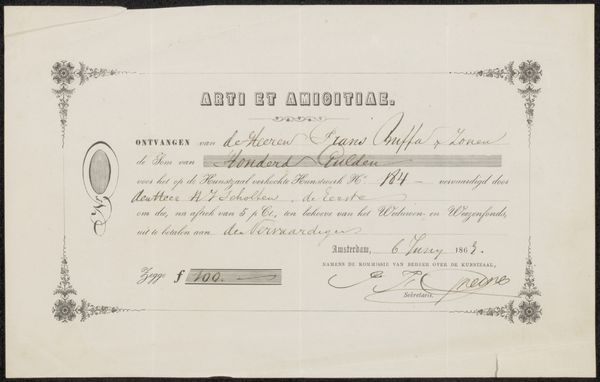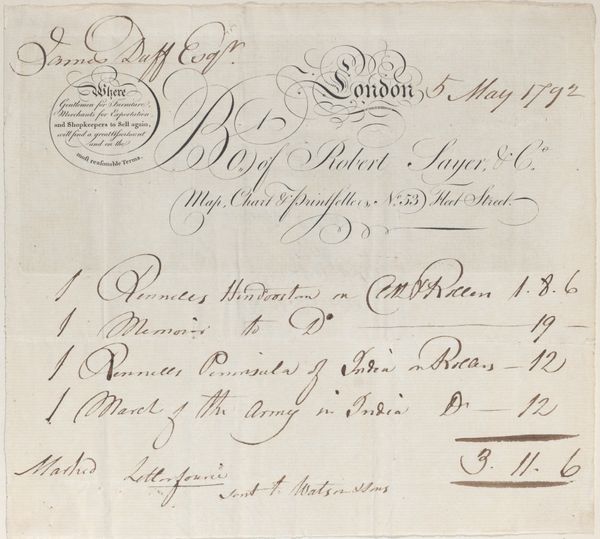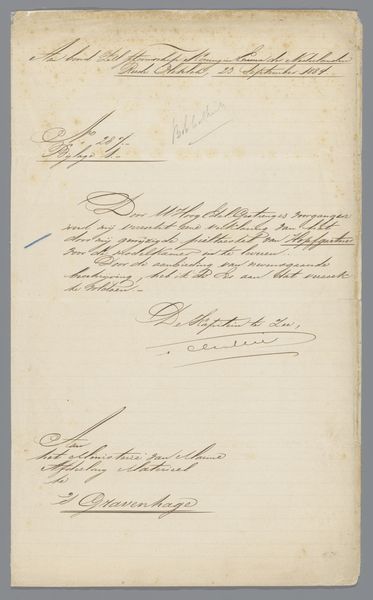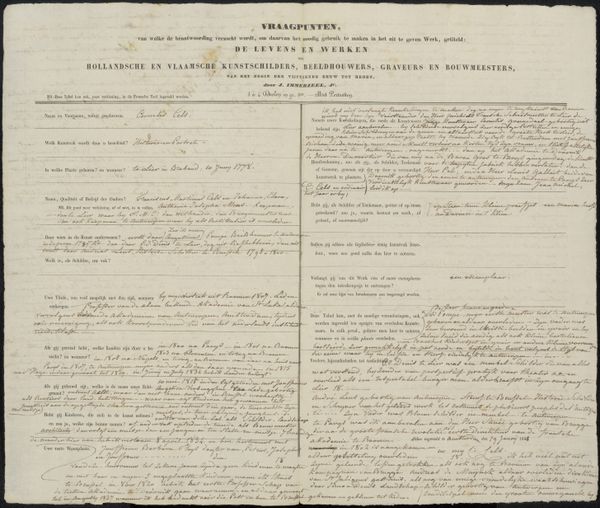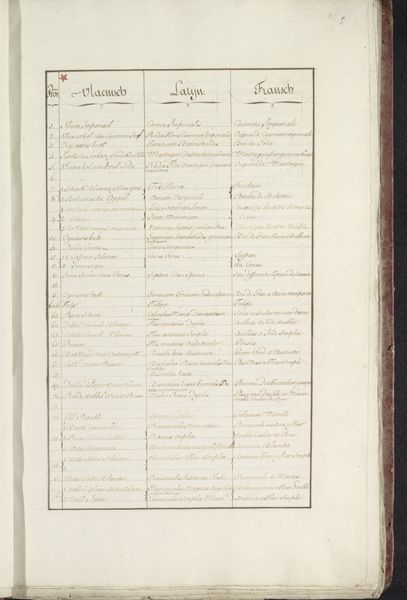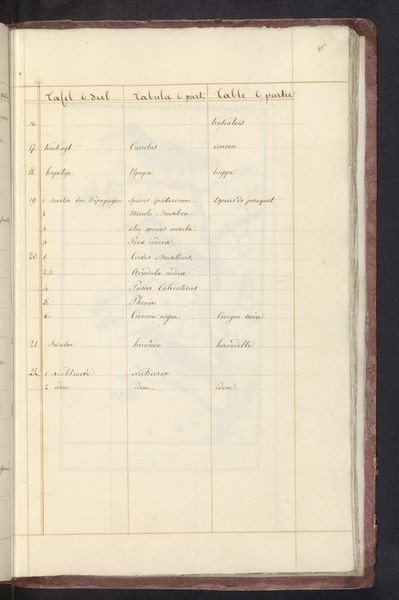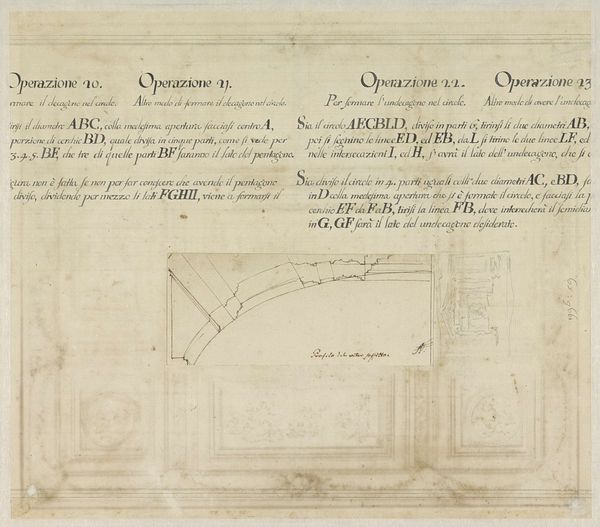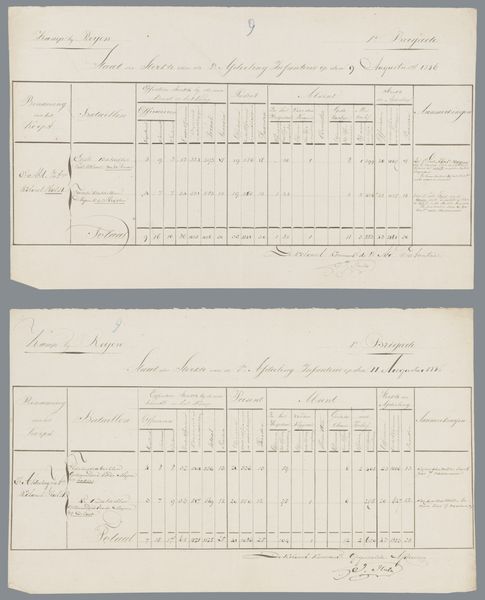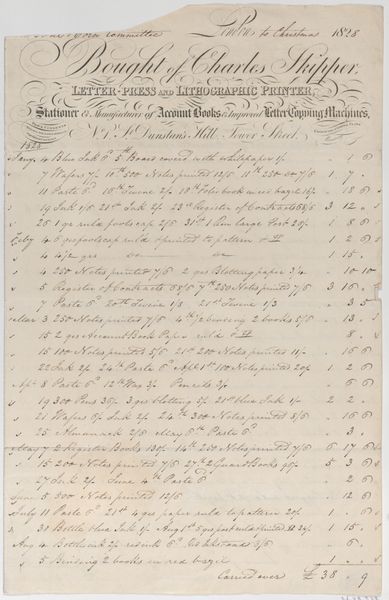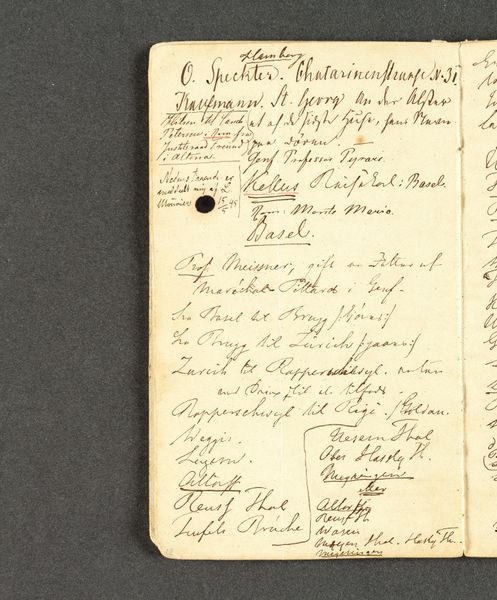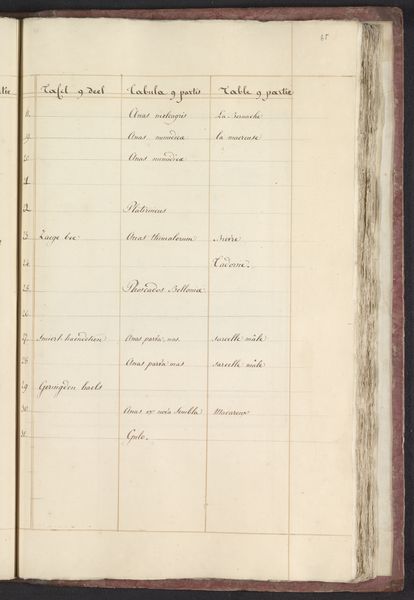
Extract uit het Stamboek der Heeren Officieren van opgemeld Korps / 3de Regiment Infanterie Possibly 1842
0:00
0:00
drawing, paper
#
portrait
#
drawing
#
medieval
#
paper
#
history-painting
Dimensions: height 335 mm, width 415 mm
Copyright: Rijks Museum: Open Domain
Editor: Here we have an official-looking document called "Extract uit het Stamboek der Heeren Officieren van opgemeld Korps / 3de Regiment Infanterie," possibly from 1842. It’s a drawing on paper. It reminds me of an official ledger. I'm struck by how formal and meticulous the handwriting is. What does this type of historical record tell us about art and its time? Curator: This is a fascinating example of art intersecting with institutional history. It’s less about aesthetic beauty and more about how power structures use images and records. These registers reflect the social hierarchy and the value placed on record-keeping within military institutions. What details catch your eye about its construction and content? Editor: I notice the columns of text and numbers. It feels like a very structured way to document someone’s career. Is this typical of the period, to catalogue individuals so methodically? Curator: Absolutely. It speaks to the increasing bureaucratization of European societies. Keeping such detailed records provided the state and military with the ability to track and manage individuals effectively. These records aren't simply neutral; they are tools for social control and advancement. Did imagery and portraits also play a role alongside these records? Editor: It makes me wonder about the human element behind all these facts and figures. Each entry represents a person. Knowing that their lives were distilled down to this data is sobering. It shows how systems can shape our understanding and documentation of individuals. Curator: Exactly. So, thinking about the politics of imagery, how might portraits of these officers, potentially held elsewhere, interact with this somewhat dry record? The contrast or connection is powerful. Editor: I guess, both this document and their portraits served to legitimize the officer's status and power. Thanks! I never would have considered its role as a reflection of social structures and control. Curator: And I appreciate your reminding us that these aren’t just records, but distillations of lives lived within that power structure.
Comments
No comments
Be the first to comment and join the conversation on the ultimate creative platform.
